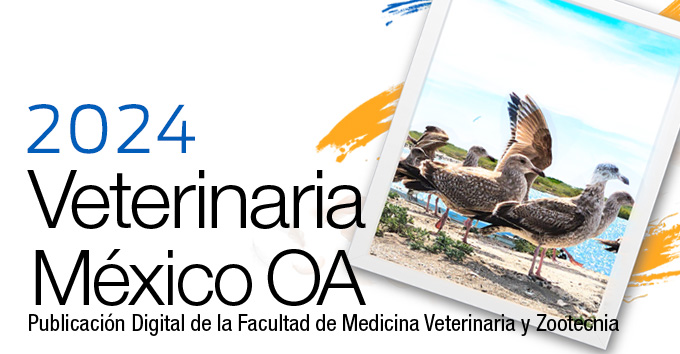Efficiency of ozone (O3) therapy on experimental acidic skin burns in rats
Main Article Content
Abstract
In this study, it was aimed to investigate the efficacy of O3 therapy in experimentally induced HF skin burns in rats. A total of 20 healthy male Wistar Albino rats (weighing 250-300 g, aged 16 weeks) were used as the material of the study. They were divided into two groups (as experimental and control groups) of 10 rats which were housed individually and fed ad libitum. Hydrofluoric acid (HF) skin burns were induced in all animals. The ozonized (20 µg O3/mL) liquid vaseline was applied topically for seven days to the experiment group as well as parallelly, a saline solution was applied to the control group. In the histopathologic evaluation, inflammation, vascularization, epithelial regeneration and fibrosis were evaluated. The epithelial proliferation and collagenization were higher and statistically significant in the experimental group, while the infiltration was higher and statistically significant in the control group. As a result of this study, it was observed that ozone plays an important role in the tissue repair process in chemical burns. The increase of fibroblast activation and re-epithelization in the experimental group demonstrated that ozone therapy could be suggested as first aid in HF skin burns. It was concluded that more studies on ozone are needed to shed light on the subject.
Article Details
References
Arda MS, Kuas N, Söztutar E, Koçman AE, İlhan H. Comparison of burn depth at different temperatures on ex vivo human skin with standardized model and comparison of the results with rat contact burn model. Pediatric Research. 2018;5(2):88-91. doi: 10.4274/jpr.47113.
McKee D, Thoma A, Bailey K, Fish Z. A review of hydrofluoric acid burn management. Plastic Surgery. 2014;22(2):95-98. doi: 10.1177/229255031402200202.
Üstebay S, Öztürk Ö, Bilge A, Üstebay DÜ, Tezcan AH. Impacts of ozone treatment and its relationship with IGF-1 levels after injury of soft tissue: an experimental study in rats model. Kafkas Universitesi Veteriner Fakültesi Dergisi. 2017;23(6):967-971. doi: 10.9775/kvfd.2017.18058.
Fitzpatrick E, Holland OJ, Vanderlelie JJ. Ozone therapy for the treatment of chronic wounds: a systematic review. International Wound Journal. 2018;15(4):633-644. doi: 10.1111/iwj.12907.
Pivotto AP, Banhuk FW, Staffen IV, Daga MA, Ayala TS, Menolli RA. Clinical uses and molecular aspects of ozone therapy: a review. Online Journal of Biological Sciences. 2020;20(1):37-49. doi: 10.3844/ojbsci.2020.37.49.
Cavallini M, Casati A. A prospective, randomized, blind comparison between saline, calcium glukonate and diphoterine for washing skin acid injuries in rats: effects on substance p and β endorphin release. European Journal of Anesthesiology. 2004;21:389-392. doi: 10.1017/S0265021504005071.
Saracoglu A, Kuzucuoglu T, Yakupoglu S, Tuncay E, Demirhan R. Chemical burn injury due to hydrofluoric acid: a case of successful management without hexafluorine. Marmara Medical Journal. 2015;28:161-164. doi: 10.5472/MMJcr.2803.02.
Guven A, Gundogdu G, Sadir S, Topal T, Erdogan E, Korkmaz A, Surer I, Ozturk H. The efficacy of ozone therapyin experimental caustic esophageal burn. Journal of Pediatric Surgery. 2008;43:1679-1684. doi: 10.1016/j.jpedsurg.2008.01.064.
Valacchi G, Fortino V, Bocci V. The dual action of ozone on the skin. British Journal of Dermatology. 2005;153(6):1096-1100. doi: 10.1111/j.1365-2133.2005.06939.x.
Zeng J, Lu J. Mechanisms of action involved in ozone-therapy in skin diseases. International Immunopharmacology. 2018;56(138):235-241. doi: 10.1016/j.intimp.2018.01.040.
Rippa AL, Kalabusheva EP, Varotelyak EA. Regeneration of dermis: scarring and cells involved. Cells. 2019;8(6):607. doi: 10.3390/cells8060607.
Roblin I, Urban M, Flicoteau D, Martin C, Pradeau D. Topical treatment of experimental hydrofluoric acid skin burns by 2.5% calcium gluconate. Journal of Burn Care & Research. 2006;27(6):889-894. doi: 10.1097/01.BCR.0000245767.54278.09.
Kodik MS, Akdemir O, Lineawear WC, Cavusoglu T, Ozsarac M, Aktug H,Songur E, Tiftikoglu YO. Comparison of skin effects of immediate treatment modalities in experimentally induced hydrofluoric acid skin burns. International Wound Journal. 2015; 12(6):716-723. doi: 10.1111/iwj.12214.
Pchepiorka R, Moreira MS, Lascane NA, Catalani LH, Allegrini S, Lima NB, Gonçalves F. Effect of ozone therapy on wound healing in the buccal mucosa of rats. Archives of Oral Biology. 2020;119(1):1-7. doi: 10.1016/j.archoralbio.2020.104889.
Naik SV, Rajeshwari K, Kohli S. Ozone-a biological therapy indentistry-reality or myth?. The Open Dentistry Journal. 2016;10(1):196-206. doi: 10.2174/1874210601610010196.
Kim HS, Noh SU, Han YW, Kim KM, Kang H, Kim HO, Park YM. Therapeutic effects of topical application of ozone on acute cutaneous wound healing. Journal of Korean Medical Science. 2009;24:368-374. doi: 10.3346/jkms.2009.24.3.368.
Ripamonti CI, Maniezzo M, Boldini S, Pessi MA, Mariani L, Cislaghi E. Efficacy and tolerability of medical ozone gas insufflations in patients with osteonecrosis of the jaw treated with bisphosphonates preliminary data medical ozone gas insufflation in treating onj lesions. Journal of Bone Oncology. 2012;1:81-87. doi: 10.1016/j.jbo.2012.08.001.
Diaz JH, Lopez FA. Skin, soft tissue and systemic bacterial infections following aquatic injuries and exposures. The American Journal of the Medical Sciences. 2015;349(3):269-275. doi: 10.1097/MAJ.0000000000000366.
License

Veterinaria México OA by Facultad de Medicina Veterinaria y Zootecnia - Universidad Nacional Autónoma de México is licensed under a Creative Commons Attribution 4.0 International Licence.
Based on a work at http://www.revistas.unam.mx
- All articles in Veterinaria México OA re published under the Creative Commons Attribution 4.0 Unported (CC-BY 4.0). With this license, authors retain copyright but allow any user to share, copy, distribute, transmit, adapt and make commercial use of the work, without needing to provide additional permission as long as appropriate attribution is made to the original author or source.
- By using this license, all Veterinaria México OAarticles meet or exceed all funder and institutional requirements for being considered Open Access.
- Authors cannot use copyrighted material within their article unless that material has also been made available under a similarly liberal license.



